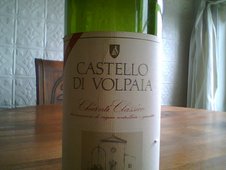The cocktail world can get pretty sanctimonious about the Mixed-Drink Beforetimes. So it's always pleasure for the ears when some dearly held conventional truths are torn down for shibboleths that they are. During the recent Manhattan Cocktail Classic, the most talked-about panel was called "Do Not Resuscitate." It was packed with some of the most unassailable authorities in the cocktail demi-monde, and they dared to make such blasphemous statements as the Aviation isn't as good a cocktail as we think, and the Brooklyn is, when it comes down to it, not as tasty as a Manhattan.
Shortly after the seminar wrapped up, I met a bartender and told him which cocktails the panelists had trashed. With the mention of each drink, he got more and more agitated. At that reaction, I knew the panel had done its job.
I wrote up the seminar for the Times. Here it is:
Cocktails for the History Books, Not the Bar
By ROBERT SIMONSON
A collection of cocktail world figures lined up Saturday at the Manhattan Cocktail Classic, the annual New York drinks convention, to shoot down some sacred cows.
Many a pre-Prohibition libation has been glorified in recent years as the cocktail demimonde began to resurrect and lionize the drinks of Days Gone By. Not every drink deserved the honor. That was a point of the panelists gathered at the Andaz 5th Avenue hotel for “Do Not Resuscitate,” a seminar sponsored by Pierre Ferrand Cognac. The speakers included the legendary barman Dale DeGroff; the owner of the Pegu Club, Audrey Saunders; the mixed-drink historian David Wondrich; the owner of Fort Defiance, St. John Frizell; the tequila and mezcal authority Steve Olson; and the wandering cocktail generalists Robert Hess, Philip Duff and Angus Winchester.
A few of the darlings of the cocktail renaissance took a heavy drubbing from the panel. Among them was the Brooklyn cocktail. Entirely obscure a decade ago, this mix of rye, dry vermouth, maraschino liqueur and Amer Picon (a French amaro), can now be found on bar menus across the United States. “This is not a good drink,” Mr. Frizell said with unhesitating definitiveness. As the owner of a Brooklyn bar, Mr. Frizell has seen his share of Brooklyn cocktails. Most of said concoctions bend over backwards to make up for the fact that you can no longer buy one of the drink’s key ingredients, Amer Picon, in America. “Drinking a Brooklyn makes you think, ‘Why am I not drinking a Manhattan?’ — a drink for which the ingredients are readily available,” he said.
Mr. Degroff took aim at the aviation, a cocktail made of gin, lemon juice and maraschino liqueur from the early 20th century. Rediscovered in the early 2000s, it was one of the earliest and most celebrated reclamation projects of the mixologist community. “It was a darling of the Internet,” Mr. DeGroff said. But, “It tastes like hand soap.” And, if you use the blue-hued creme de violette called for in some recipes, “it’s more like hand soap.”
The Papa Doble — a famous creation credited to Ernest Hemingway that contains much rum, some lime juice and almost no sweetener — also received no love from Mr. DeGroff. “Why should we have our drinking habits dictated by Hemingway’s diabetes problem?” he asked. He added, regarding the novelist’s way with mixing a cocktail: “Hemingway always got it wrong.”
Of the vesper, the vodka-gin martini variation made famous by fictional spy James Bond, Mr. Winchester said, “I would not be sad if this drink disappeared.” He added that you couldn’t make it anyway, because one of its ingredients, Kina Lillet, hasn’t been produced for years. Ms. Saunders, meanwhile, berated the French Martini. She mainly disliked the blend of vodka, pineapple juice and Chambord for the way it made people behave. That is, badly.
As the table’s resident agave ace, Mr. Olson trained his sights on the el diablo, a newly popular drink from the 1940s, made of tequila, creme de cassis and ginger ale. “It’s great that bars are starting to think outside the margarita when it comes to tequila cocktails,” Mr. Olson said. “But when they decide to put a different tequila cocktail on the menu, they’re moving to the el diablo. When you add ginger ale to tequila, you kill the agave. What makes it worse is a lot of that ginger ale is coming out of a soda gun.”
A few of the drinks executed by the panel are still so little known that their deaths would be little noticed. Robert Hess lambasted the snowball cocktail, taken from the famed Savoy Cocktail Book. “When I see equal parts of ingredients in a cocktail recipe, I get suspicious,” Mr. Hess said. “It’s too convenient.” The stomach-churning, gin-based formula for the snowball boasts matching doses of Creme de Violette, Creme de Menthe, anisette and cream. “This may be the only bad cocktail in the Savoy Cocktail Book,” Mr. Hess suggested.
Mr. Wondrich laid into the bath cure, the house drink at Chicago’s famous Pump House. Resembling an early ancestor of the Long Island Iced Tea, it called for six kinds of liquors, adding up to a full eight-and-one-half ounces of booze. “This drink should not only not be made, it should not even be thought about,” Mr. Wondrich said.
Charles H. Baker Jr., the mid-20th-century cocktail writer and mixologist, was left bloodied and battered by the speakers. About Baker’s Holland Razor Blade — a blend of Holland gin, lemon juice and cayenne pepper — Mr. Duff said, “To say that the Holland Razor Blade is your favorite Baker cocktail is like saying you ride a T. Rex to work — it’s not possible, and it can’t be pleasant.”
Mr. Duff further suggested that Hemingway and Baker, who were pals, may have represented the original “axis of evil,” cocktail-wise.




